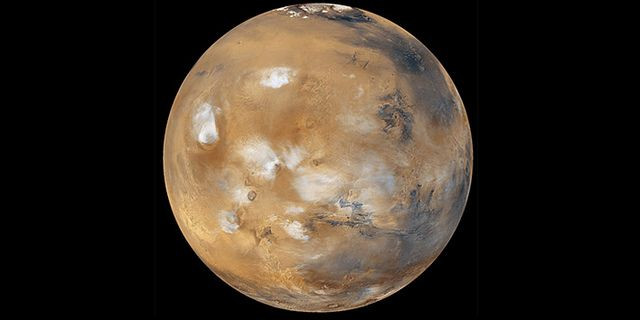
NASA won't launch its next mission to Mars for another year, but preparations for the journey are already well underway with the spacecraft currently undergoing extensive testing, Space.com reports.
Technicians are gearing up for the cosmic send-off within a Lockheed Martin Space Systems high-bay cleanroom, hurriedly equipping and testing the Mars Atmosphere And Volatile EvolitionN - or MAVEN - space probe for its 2013 mission.
Created for $670 million, scientists are hoping the MAVEN Mars orbiter will help them answer what happened to Mars' water and atmosphere. The overall goal is to study how Mars loses its atmospheric gas to space, and the role this process has played in changing the Martian climate over time. Scientists say there was once liquid water flowing across the surface of Mars, but today the atmosphere on the Red Planet today is cold and dry, so just where did the water and the atmosphere go?
The MAVEN spacecraft has a slim 20-day launch period window between Nov. 18 and Dec. 7, 2013. If conditions are favorable, the probe will shoot into orbit around the planet on Sept. 22, 2014. After a five-week commissioning phase, the probe will begin its primary mission around the beginning of November 2014.
MAVEN's mission will last one year allowing thorough coverage of near-Mars space, according to Space.com. The probe will hopefully provide essential data to understanding the nature of planetary habitability.
At this point the craft is deep in the assembly phase, and is being tested along with its launch operations, a critical period called ATLO, says Tim Priser, Lockheed Martin's chief engineer for the spacecraft.
"If you look at the physical characteristics of Maven, it is a direct descendant of our Mars Reconnaissance Orbiter," Priser told SPACE.com.
When completed the MAVEN will weigh in at little over 5,620 pounds. When its fixed solar arrays are stretched out, Maven's wingtip-to-wingtip length will be 37 feet.
According to Priser, MAVEN will begin rigorous environmental testing after the holidays, "to characterize the beast."
For that testing period will the craft will undergo shake, rattle and vibration simulations to match the probe's Atlas 5 rocket launch, and will also describe magnetic cleanliness.
"We're going to shake the spacecraft on a new three-axis shake table," Priser said.
MAVEN will be placed in a highly elliptical orbit once it reaches Mars, Priser says. The orbit will allow the craft to fly five "deep-dip" missions, which will skim the planet's atmosphere, which is all part of the plan to probe Mars' upper atmosphere, ionosphere and interactions with the sun and solar wind.
Priser says the MAVEN is targeted to be delivered to its Florida launch facility in the first week of August 2013.
© 2025 Latin Times. All rights reserved. Do not reproduce without permission.




